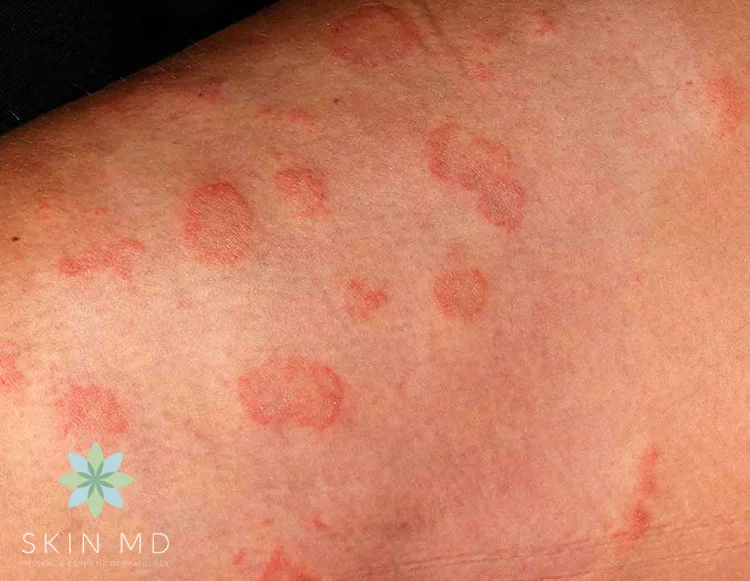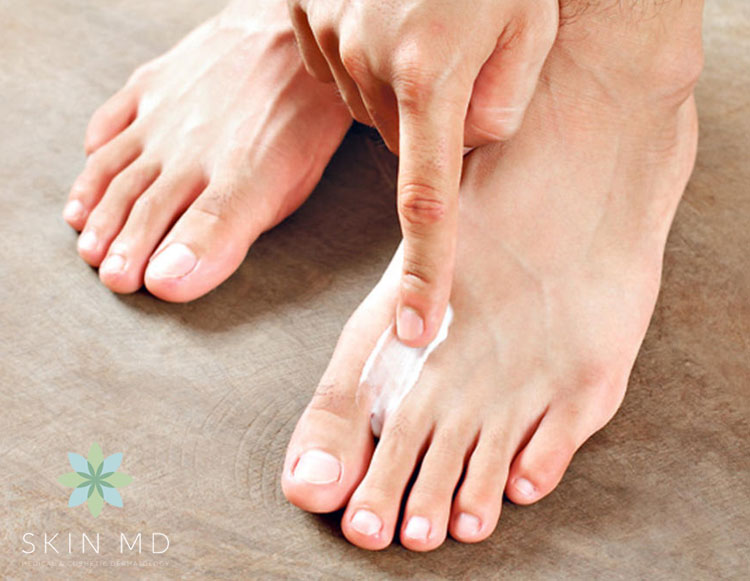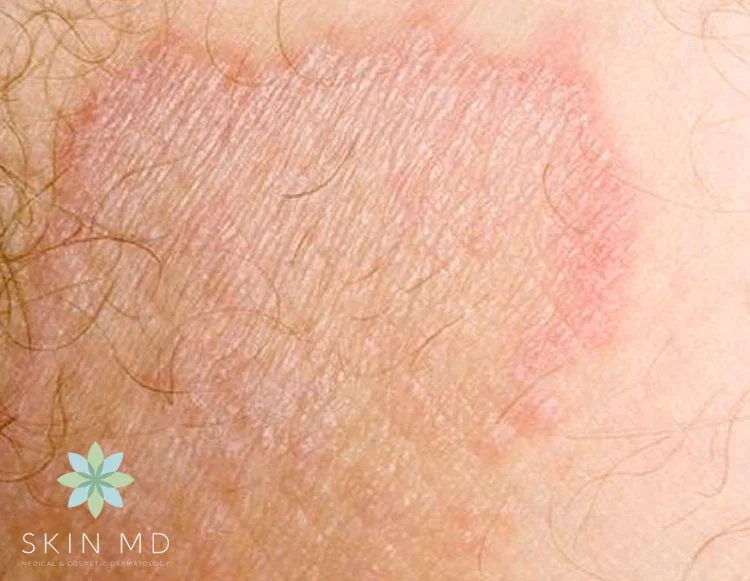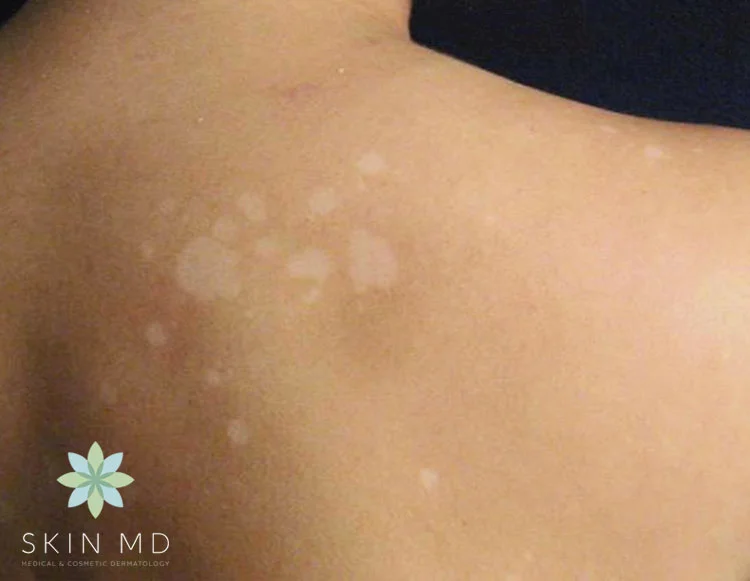All You Need to Know About Skin Fungus
Have you or someone you know experienced dealing with itchy patches of skin even when nsect bites are not evident? That could be a sign of skin fungus infection.
The rainy season’s warm and humid weather presents the perfect conditions for skin fungi to thrive.
During this time, it’s a must to stay informed on the causes, symptoms, as well as treatments for different types of skin fungi.
To help you out, here’s everything you need to know about skin fungus, from athlete’s foot to tinea versicolor.
Skin Fungus: Everything You Need to Know
What is Skin Fungus?
Certain fungi naturally and harmlessly occur on human skin, including the yeasts Candida and Malassezia. Problems only arise if harmful fungi invade the body or if resident skin fungi experience overgrowth. Harmful fungi, in particular, can be harder to get rid of, as they can survive in the surroundings and re-infect a recovering patient.
Fungal skin infections generally are not serious, although their itchiness can definitely be a nuisance.
Who is at Risk of a Fungal Skin Infection?
While anyone can be affected, the following factors can raise the risk of fungal skin infections:
weakened immune system
antibiotic usage
ongoing cancer treatment
diabetes
What Types of Skin Fungus Are There?
There are several different kinds of skin fungi, each with its own symptoms, mode of transmission, and treatments. A dermatologist can determine the nature of a patient’s fungal skin infection through a physical exam, which may involve gently scraping off samples of affected skin. Here are 5 common types of skin fungus:
1. Ringworm
Ringworm or tinea is one of the more common fungal skin infections that can infect humans. It gets its name from the ring-like shape of its associated rashes. The fungus responsible for tinea lives on dead tissues, whether on the hair, skin, or nails.
What are the Symptoms of Ringworm?
Red patches that develop into ring-shaped rashes. Individual patches and rashes may overlap. It is also possible, though uncommon, for the rashes to be absent from an infected person
Cracked, peeling skin that may resemble scales
Blistering
An itchy, burning sensation
Hair falling out in clumps, in the case of a scalp infection
How is Ringworm Transmitted?
Ringworm spreads by contact. The exact nature of this contact can vary:
Coming into direct, skin-to-skin contact with other people or infected pets (e.g. dogs, cows)
Sharing clothes, towels, combs, and brushes with an infected person
Touching furniture or surfaces where the ringworm fungus can linger
Stepping in soil that’s contaminated with the fungus
How is Ringworm Treated?
Your dermatologist will probably recommend an over-the-counter medicine, like a cream, lotion, or powder. Some popular medications for ringworm are clotrimazole (Canesten), miconazole (Daktarin or Micotran), and terbinafine (Lamisil). However, if you have ringworm on the scalp or on more than one part of your body, your dermatologist may write you a prescription instead.
You may have to use these medicines for 2 to 4 weeks to completely get rid of the fungus that causes ringworm. This lowers the chances of reinfection as well.
2. Athlete's Foot
Also called tinea pedis, this type of ringworm infection primarily affects the feet. It is commonly associated with athletes because the fungus thrives in socks, shoes, locker rooms, and other warm and moist places. One common fungus that triggers athlete’s foot is trichophyton rubrum.
Athlete’s foot often appears in the summer months, when warmer temperatures promote fungal growth.
What are the Symptoms of Athlete’s Foot?
Cracked, peeling skin that may resemble scales
Redness and blistering
An itchy, burning sensation
What are the Different Types of Athlete’s Foot?
Interdigital. This common type of athlete’s foot usually occurs in the web of skin between the two smallest toes. Sometimes, the infection may spread to the sole.
Moccasin. This type begins with a minor irritation or some dryness and itching. Later on, the skin thickens and cracks, covering the entire sole and reaching the sides of the foot.
Vesicular. The least common kind of athlete's foot, vesicular infections start as an outbreak of pus-filled blisters on the underside of the foot. The blisters may also appear between the toes, on the heel, or on the top side of the foot.
How Does One Contract Athlete’s Foot?
Stepping barefoot into showers, locker room floors, or other public areas contaminated with the fungus
Using contaminated community baths and pools
Wearing sweaty socks or tight shoes for a long time
Sharing sports equipment with people carrying the fungus
How is Athlete’s Foot Treated?
Athlete's foot is often treated with topical antifungal medication, although severe cases may require oral medication instead.
To ease the symptoms while athlete’s foot is being treated, patients are advised to keep the feet clean and dry. Antifungal foot powder, spare pairs of socks, and well-ventilated shoes can also provide relief.
3. Jock Itch
Tinea cruris or jock itch is a specific type of ringworm that affects the groin, buttocks, or thighs.
What Are the Symptoms of Jock Itch?
A circular red rash
Chafing or flaking
An itchy, burning sensation
How Does One Contract Jock Itch?
Like ringworm in general, jock itch can spread through direct contact or via objects carrying the ringworm fungus. It thrives on warmth, skin friction, and moisture, which may all be present in the groin area of an individual. Tight clothing and undergarments may lead to jock itch if they trap in sweat.
Jock itch can also occur when ringworm spreads from the feet to the groin area, often through towels.
How is Jock Itch Treated?
Over-the-counter antifungal creams and sprays can often take care of jock itch. However, more severe cases may respond better to prescription antifungal creams.
Affected individuals are highly advised to keep the infected area clean and dry. They must also be sure to change clothes daily.
4. Yeast
The Candida genus of fungi can cause toenail infections, oral thrush, vaginal yeast infections, and even diaper rash. Candidiasis or yeast infections can occur anywhere on the body, although they often affect warm, moist, and creased folds of skin like the armpits and the groin.
Candida infections are common among people who are obese.
What Are the Symptoms of a Yeast Infection?
Signs of candidiasis in skin folds include:
A rash
Patches that ooze clear fluid
Pimple-like bumps
An itching or burning sensation
Signs of a fungal infection in the nail beds include:
Swelling and pain
Pus
A nail that has turned white or yellow nail and separated from the nail bed
Signs of thrush or oral candidiasis include:
White patches on the tongue and on the inside of the cheeks
Pain in affected areas
Signs of a vaginal yeast infection include:
White, yellow, or grayish discharge
Itching and burning
Redness in the external area
How Does One Contract a Yeast Infection?
Candidiasis occurs when Candida grows too actively and causes a reddish rash on the skin. Unlike ringworm, a yeast infection is not contagious.
How are Yeast Infections Treated?
Candidiasis generally responds to antifungal creams. Medicated suppositories may be used to treat vaginal yeast infections, while medicated mouthwash or lozenges can be used against thrush. For severe infections or cases where the patient has a compromised immune system, a dermatologist may suggest oral anti-yeast medications.
5. Tinea Versicolor
This fungal skin condition is usually triggered by Malassezia globosa, another naturally occurring skin fungus.
What Are the Symptoms of Tinea Versicolor?
Aside from itchiness, a trademark indicator of tinea versicolor is the presence of discolored patches of skin on the body. These may be lighter than skin tone in individuals with a dark complexion, or darker than usual in patients with pale skin.
How Does One Contract Tinea Versicolor?
The condition is linked to individuals with oily skin or hormonal fluctuations. Aside from that, not much is known about what factors can lead to this condition.
How is Tinea Versicolor Treated?
Smaller areas may improve with topical medications, while larger or recurrent infections may respond better to oral treatments. Specific medications your dermatologist may suggest include econazole (Spectazole), ciclopirox (Loprox), ketoconazole (Nizoral), clotrimazole (Canesten), and miconazole (Daktarin or Micotran).
How Can I Prevent Skin Fungus Infections?
It’s difficult to get rid of skin fungus completely, but there are steps you can take to prevent fungal skin infections instead:
Keep your skin clean and dry, especially after bathing, swimming, or exercising.
Wear slippers in locker rooms and common showers.
Wear clean clothes. Change your socks and underwear daily.
Wash your hands thoroughly after playing with pets.
If you find out that your pets have ringworm, visit your vet.
Wear clothes and shoes that fit correctly. They should not be overly tight.
If you have athlete's foot, put your socks on before your underwear to keep the fungus from spreading to the groin.
Are There Complications Associated with Skin Fungus?
Again, skin fungus tends to be more of a treatable nuisance. If anything, ringworm can spread from one body part to another without proper precautions.
Another odd occurrence is when fungal skin infections on one part of the body trigger rashes in a completely different area. An example is athlete’s foot causing a rash on the hand, even without the spread of fungi. These id reactions (or dermatophytids) are simply inflammatory reactions to a fungus infection.
Have any other concerns about skin fungus? Or do you have a rash which you suspect might be a fungal infection already? Feel free to consult the board-certified dermatologists of Skin MD. Our medical dermatology and related services may be just what your skin needs to stay in prime condition. Consult us today and let us help you achieve peace of mind together with flawless skin!
Liked this article? Read about other common skin conditions and cutting-edge dermatological treatments by visiting our blog regularly.





